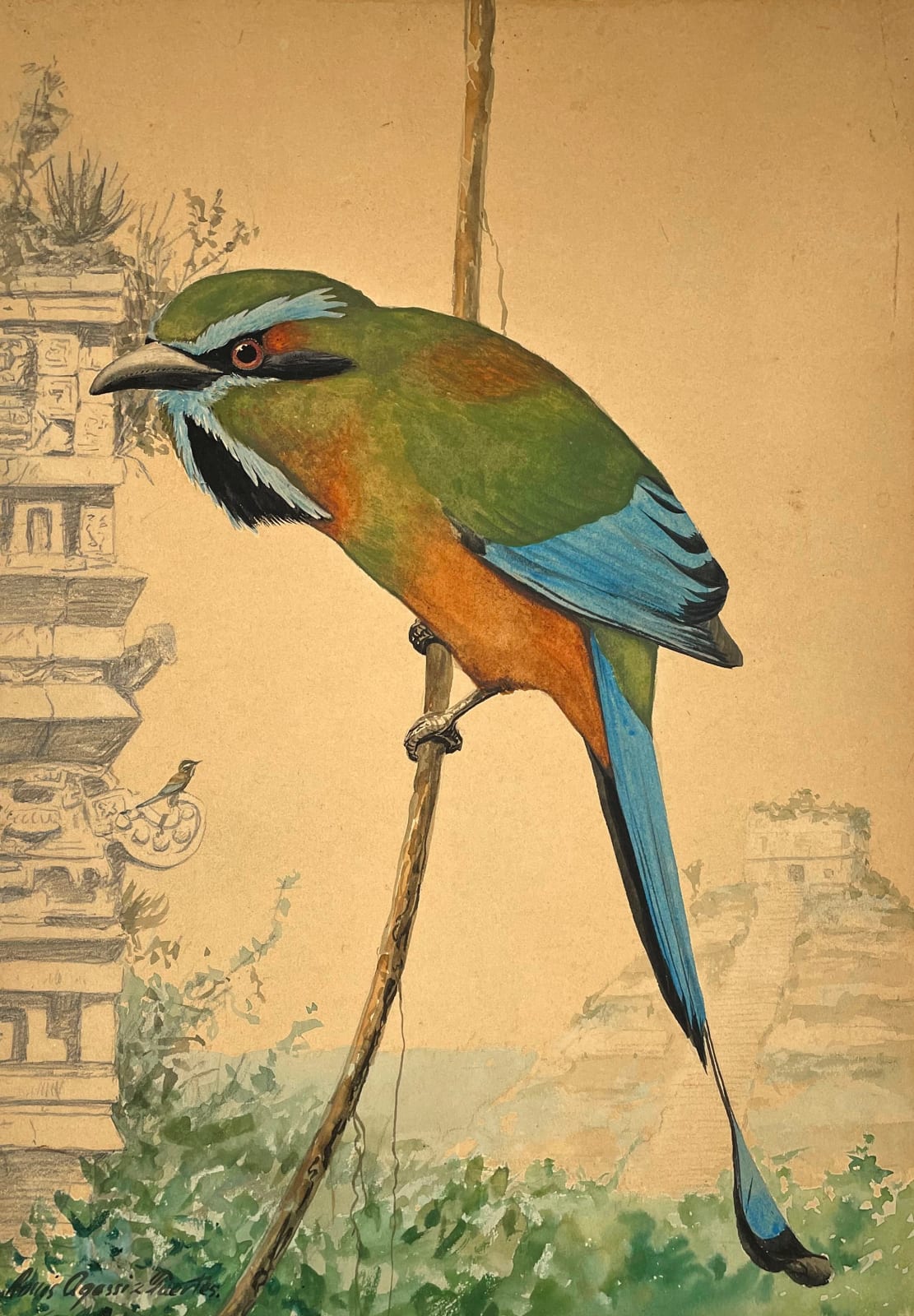Louis Agassiz Fuertes
Framed dimensions: 20 1/2 x 16 5/8 inches
Although James Audubon is hailed as the premier American bird illustrator and ornithologist, Louis Agassiz Fuertes is in many ways his superior. Fuertes studied with Audubon, but the lifelike precision and artistic dexterity of Fuertes’s works puts him in a category of his own. His talent for painting birds was recognized early by Elliot Coues, the renowned ornithologist, while Fuertes was a student at Cornell. A few years later, Fuertes collaborated with Coues and Mabel Osgood Wright on the book "Citizen Bird," for which he provided illustrations.
In 1895 Fuertes began working with the painter Abbott Handerson Thayer, who challenged Fuertes to refine his already prodigious technical skill and combine it with artfulness and sensitivity. Fuertes came to define his style as “bird portraiture.” Rather than just presenting the bird accurately, Fuertes captured the birds’ personalities while simultaneously conveying the soft texture of their feathers. He also composed his images to include a variety of bird specimens in a single frame. While Fuertes initially did this to save on color and printing expenses, the results were complex and dynamic compositions.
Fuertes's work became immensely popular, and he received more commissions than he could complete. His artwork appeared in numerous magazines, children’s books, and even Arm & Hammer baking soda collectors’ cards. He toured as a speaker for groups such as local Audubon clubs and was instrumental in popularizing ornithology as a hobby. Despite his collection of specimens for his art, he was an early proponent of conservation and protection.
Throughout his career, Fuertes took many trips into the field. After his initial trip to Florida with the Thayer family in 1898, he began participating in a number of field expeditions in such places as Alaska, western Canada, Mexico, Colombia, and the American West. On these trips, Fuertes collected and painted specimens and took copious notes on the visual attributes and behavioral observations of his subjects.
Fuertes traveled to Mexico several times and visited the Yucatan in 1910. It was during this trip that he met Edward Herbert Thompson (1857-1935), an American-born archaeologist. Thompson devoted much of his career to the study of the Maya civilization. In 1879 he published an article in Popular Science Monthly in which he argued that the indigenous civilizations of North and Central America could be the remnants of the lost continent of Atlantis. The article attracted the attention of Stephen Salisbury III, a wealthy resident of Worcester Massachusetts, where Thompson resided. Salisbury was also interested in Mayan culture. As the principal benefactor of the American Antiquarian Society, he and few other members convinced Thompson to move to the Yucatan to the explore the Mayan ruins in exchange for receiving an appointment as American Consul. Thompson did early examinations and excavations of several sites in the Maya Puuc region, including Loltun and Labna.
In 1894 Thompson purchased the plantation that included the site of Chichen Itza, the large pre-Columbian city built by the Maya people of the Terminal Classical period. For thirty years he explored the site on behalf of the Field Columbian Museum, the American Antiquarian Society, the Peabody Museum at Harvard University, among others. His discoveries included the earliest dated carving on a lintel in the Temple of the Initial Series, and the excavation of several graves in the High Priest’s Temple. Thompson is most famous for dredging the Cenote Sagrado from 1904 to 1911, where he recovered artifacts of gold, copper and carved jade, as well as the first-ever examples of what were believed to be pre-Columbian Maya cloth, wooden weapons, and human remains. Thompson shipped the bulk of the artifacts to the Peabody Museum.
Fuertes would have visited Chichen Itza during the dredging of the cenote. The turquoise-browed motmot that he painted here is indigenous to the area and nests colonially on the banks of the water. The birds are best known for their bright turquoise, long pendulous tails, and are colloquially called pajaro reloj or “clock birds.” Fuertes beautifully captures the bird in its natural habitat and pays homage to the majestic Mayan city in the distance. He gave the painting to Thompson as a gift, as the beautiful calligraphic inscription on verso reveals.
Provenance
The artist;E. H. Thompson;
By descent in the family, West Falmouth, MA until 2024



